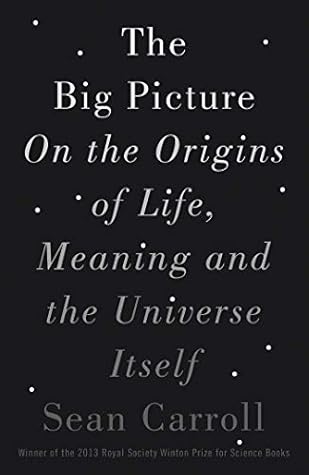More on this book
Community
Kindle Notes & Highlights
The secret here is to accept that such questions may or may not have answers.
It’s not surprising that ancient cosmologists, when theorizing about the universe, took as its fulcrum the thing they understood the best: themselves.
the Big Bang doesn’t actually mark the beginning of our universe; it marks the end of our theoretical understanding.
It’s been popular to imagine that the world is teleological—directed toward some future goal. But it’s better to think of it as ekinological, from the Greek “εκκίνηση,” meaning “start” or “departure.”
Physical motions, to the best of our understanding, are reversible.
Both directions of time are on an equal footing.
Boltzmann.
identify the entropy of a system with the number of different states that would be macroscopically indistinguishable from the state it is actually in. (Technically, it’s the logarithm of the number of indistinguishable states,
In equilibrium, time has no arrow.
very low-entropy state.
Past Hypothesis.
Nobody knows exactly why the early universe had such a low entropy. It’s one of those features of our world that may have a deeper explanation we haven’t yet found, or may just be a true fact we need to learn to accept.
Our progress through time is pushed from behind, not pulled from ahead.
frequentists,
Bayesians,
credences.
prior credences.
If we think our opponent would draw precisely one card only 10 percent of the time if they had a pair, we remove nine-tenths of the grains of sand from the jar labeled “pair”
the absence of consistency across sacred texts counts as evidence against theism.
Bayes’s Theorem is one of those insights that can change the way we go through life.
“Boltzmann Brain”
set our prior credence in radically skeptical scenarios at very low values,
if we take the world roughly at face value, we have a way of moving forward.
there are many ways of talking about the world, each of which captures a different aspect of the underlying whole.
The classic example of emergence, one you should constantly return to whenever these things get confusing, involves the air in the room around you.
The different stories or theories use utterly different vocabularies; they are different ontologies, despite describing the same underlying reality.
Each theory has a particular domain of applicability.
Within their respective domains of applicability, each theory is autonomous—
If we have two different theories that both accurately describe the same underlying reality, they must be related to each other and mutually consistent.
we often call the first theory the “microscopic” or “fine-grained” or “fundamental” one, and the second the “macroscopic” or “coarse-grained” or “emergent” or “effective” one.
trade-off between comprehensiveness of a theory and its practicality.
All we’re really doing to derive the fluid description is calculating the average properties of all the molecules.
Quantum mechanics, in particular, features the phenomenon of entanglement.
space itself is emergent rather than fundamental.
phase transition.
strong emergence, the behavior of a system with many parts is not reducible to the aggregate behavior of all those parts, even in principle.
“strong emergence” (all stories are autonomous, even incompatible) on one end
and “strong reductionism” (all stories reduce to one fundamental one) on the other.
eliminativism,
Atoms are real; tables are real;
“model-dependent realism.”)
How poetic naturalism divides up “fundamental” versus “emergent/effective,” “real” versus “illusion,” and “objective” versus “subjective.”
whole systems of belief fit together with one another, in more or less comfortable ways, pulled in by a mutual epistemological force.
self-serving bias:
Confirmation bias
the number X that we obtain by multiplying together all of the primes from our list, exactly once each, and adding 1 to the result. Then X is clearly larger than any of the primes in our list. But it is not divisible by any of them, since dividing by any of them yields a remainder
it’s a good thing that credences never reach these points of absolute certainty; if they did, no amount of new evidence could ever change our minds.
we want to avoid being sucked into a black hole of belief, where our convictions are so strong that we can never escape, no matter what kind of new insight or information we obtain.
useful to distinguish between “knowing” and “knowing with absolute logical certainty.” If our credence for some proposition is 0.0000000001, we’re not absolutely certain it’s wrong—but it’s okay to proceed as if we know it is.


